The History of Tiffany Lamps:
By 1895, the first Tiffany lamp was created. Until very recently, it was believed Tiffany himself was behind the design and creation of his famous original lamps. However, it was discovered that a woman named Clara Driscoll created the first Tiffany lamps for which the company would become famous. She was employed as a designer at Tiffany Studios for over 20 years crafting these signature designs.
These original Tiffany lamp designs are characterized by the use of lavish ornamentation and patterns inspired by nature. The most famous Tiffany lamps include the “Dragonfly”, “Wisteria” and “Daffodil”. It took skilled artisans many hours to capture the intricate beauty of nature in stained glass.
To create a Tiffany table lamp, or Tiffany floor lamp, hundreds of pieces of colored glass must be fused together. The modern process by which this is done is called the copper-foil method. It is currently debated whether this process was developed by Louis Comfort Tiffany himself or by another American glass artist named John La Farge.
First, the decorative design is created on a paper or cardboard mockup. Sheets of glass are then cut according to the mockup.
Next, the individual glass pieces are ground and then wrapped with adhesive copper tape. Finally, these pieces are soldered together to create the completed design.
The pieces of Tiffany art glass are held firmly in place by the soldered joints. So tightly, in fact, that they don’t vibrate and resonate sound when tapped like a normal window pane or drinking glass would. Because of this, they create a dull, muffled sound when struck, a sound interpreted by many as being plastic or a non- glass material.
You can tell you have a real Tiffany style glass shade by the brilliance of the colors. Some glass will have texture to it, and you may be able to see slight imperfections and irregularities in the glass itself. Finally, the art glass shade will be much heavier than a plastic one.
Favrile glass and Tiffany lamps achieved widespread popularity at home and in Europe. Tiffany’s firm ventured into jewelry and pottery, as well. The Tiffany style is still very popular today. Original Tiffany lamps fetch large sums, while many modern firms continue the tradition of manufacturing beautiful art glass Tiffany lighting fixtures and decor.
Source: https://www.lampsplus.com/ideas-and-advice/history-of-tiffany/
Works by Tiffany Studios
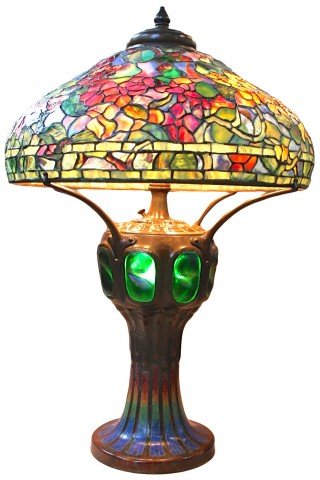
SOLD
Tiffany Style Leaded Glass Nasturtium Lamp Tiffany Studios
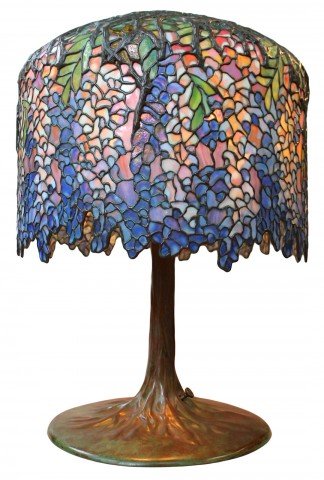
SOLD
Tiffany Style Leaded Glass Wisteria Lamp, by Paul Crist Studios Tiffany Studios
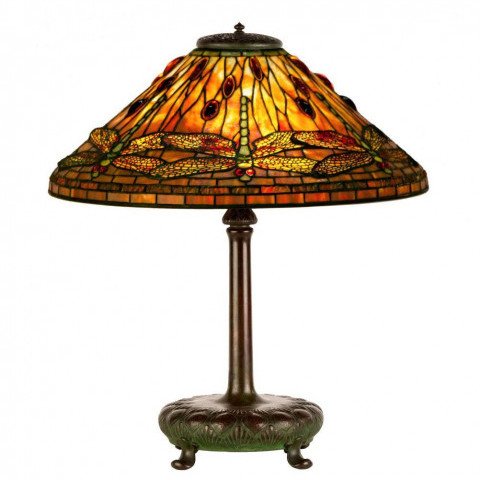
SOLD
Tiffany Dragonfly Leaded Glass and Bronze Table Lamp Tiffany Studios
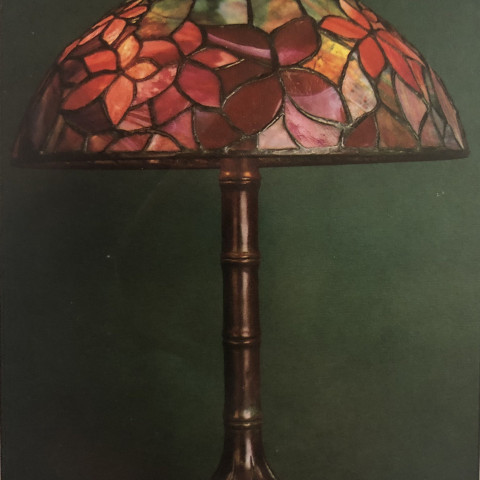
SOLD
Tiffany Woodbine with Bamboo Base Lamp Tiffany Studios
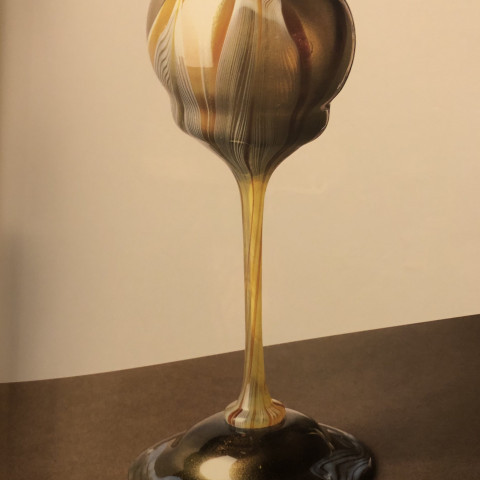
SOLD
Rare Tiffany Aventurine Favrile Glass Floriform Vase, 1632 Tiffany Studios

SOLD
Tiffany Studios Bronze Harp Form Desk Lamp Base, c. 1910 Tiffany Studios
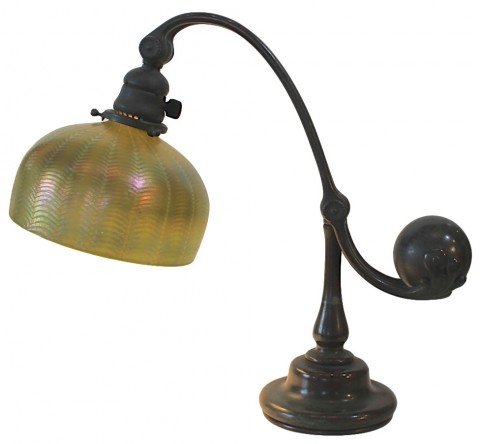
SOLD
Tiffany Studios Bronze Counterbalance Desk Lamp with Damascene Shade, c. 1910 Tiffany Studios
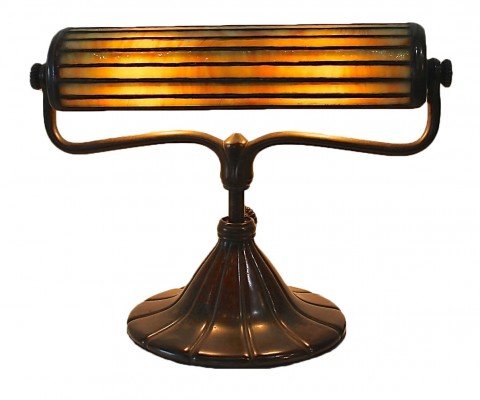
SOLD
Rare Tiffany Studios Bronze and Leaded Glass Desk Lamp, c. 1910 Tiffany Studios
